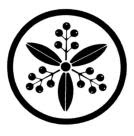Many students,in their practice, fall into the trap of stopping the technique at the instant they think they have done something wrong. There can be many reasons for this. They may think the technique was botched and there is no reason to continue. Others may stop performing the technique in order to evaluate the cause at the point of the mistake. In cutting the techinique short, the student misses out on fundemental lessons and if this stopping is done often enough, the student can develop a bad habit.
Unless the nage senses that he or his uke may be harmed by continuing, the student shouldn't stop performing the technique. The lesson may have been hidden in the remainder of the technique that wasn't explored. The opportunity has been lost. Aikido practice is physical training more than it is a mental endeavor. Stopping to take metal notes has its place, but the body needs to make adjustments. Corrections don't happen instantaneously. Corrections come slowly through repetitive practice with each technique performed building upon the next. Trust me when I say that you may correct one fault, but another will come along to take its place. Technique is in a continual state of improvement. This is what makes Aikido such a wonderful life long pursuit.
Another problem I see in stopping the technique because of a perceived mistake is that is becomes a behavioral problem or a bad habit. We are not only training to develop physical technique but also to develop proper attitude and behaviors. What we do and how we practice in the dojo is how we will perform in the real world. Developing a behavior of stopping our technique when something goes wrong will transfer itself to the street with detrimental consequences. Aikido is meant to be a fluid art that is open to transition into other techniques based on the evolving conditions. The concept of continous fluid movement can't be developed if the student is continously stopping his technique when mistakes are made. Because as most of us know, nothing even goes as planned.
There are also occasions when a dojo does a public demonstration. This may not be a life threatening situation as being attacked out on the street, but it draws parallels due to the fact that we are subjected to psychological stresses that we don't normally experience in the dojo. Many people have a fear of speaking or performing in front of an audience. The heart beats harder and faster. The nage and uke become nervous. The mind can't be entirley relied upon. The body's wisdom must take the lead. It doesn't look good during the demonstration when the nage makes a mistake and stops in the middle of the technique. Worst yet is when the nage does this in conjunction with a verbal expletive like "oh sh#t". That is a bad day at the office. If the nage just continued with the technique or just blended seamlessly into another technique without pause, the spectators wouldn't know the difference.
Furuya Sensei told a story of watching a performance by a classical Japanese dancer. During the performance she failed to catch her fan when she threw up into the air. She continued dancing without missing a beat. A moment later she gracefully picked up the fan and continued the dance. Her movements were so perfect that if you didn't know the dance, you would have thought the dropping of the fan was part of the performance.
I believe it is important not to think too much about the technique. I don't want the training to become too much of a cerebral experience. I believe it is more important to feel the technique. Many times the lessons within the technique can't be taught entirely through words alone but must also be discovered by the body's slow and continuous absorption of the movement. Let us try not to cut our training short.
Wednesday, July 1, 2009
Subscribe to:
Post Comments (Atom)

No comments:
Post a Comment